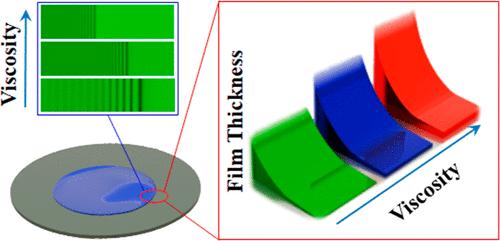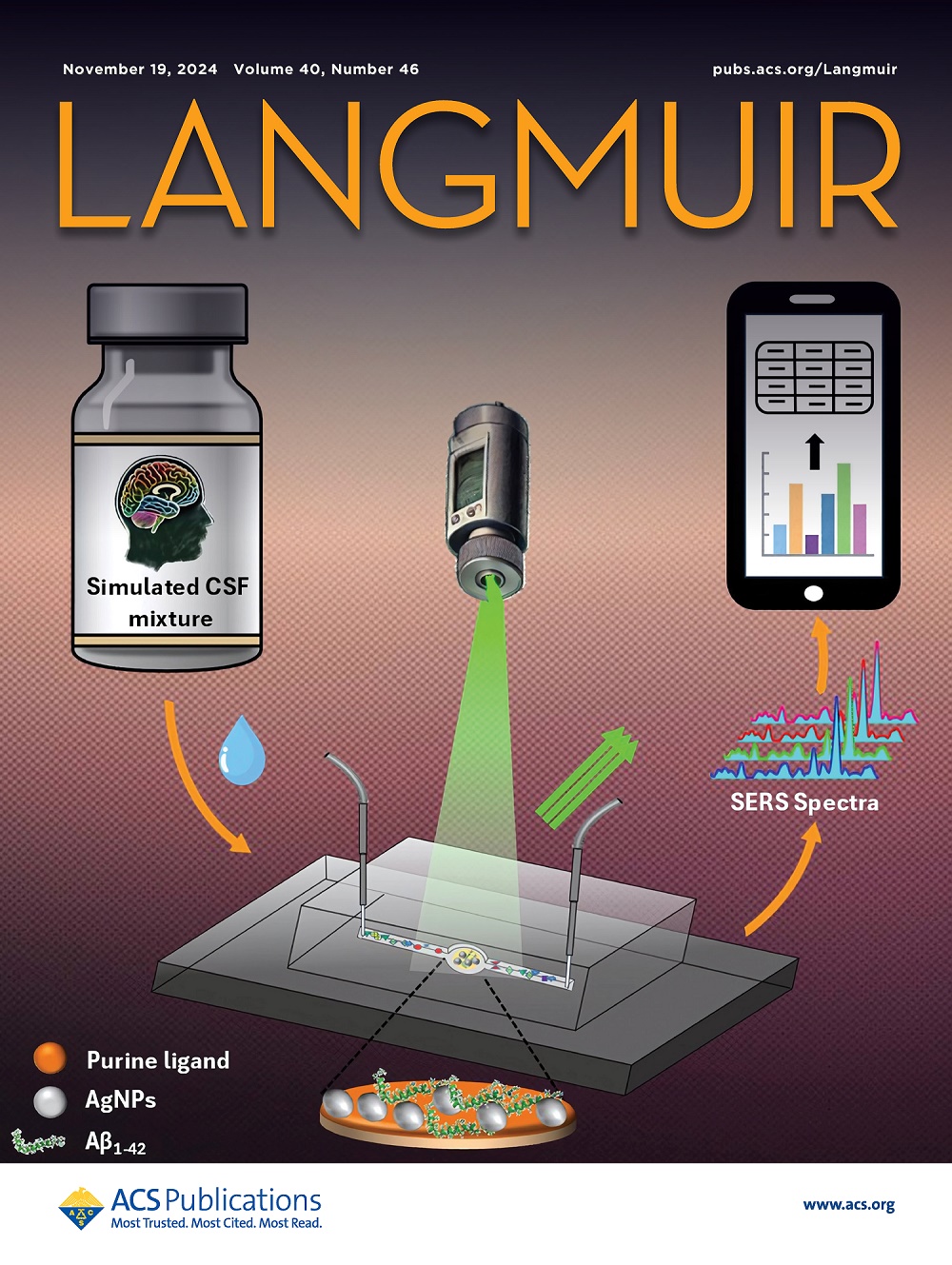Influence of Bulk Viscosity on the Interfacial Properties of Highly Viscous Extended Liquid Thin Films
IF 3.7
2区 化学
Q2 CHEMISTRY, MULTIDISCIPLINARY
引用次数: 0
Abstract
Extended thin films have been extensively studied in the context of interfacial and microscale fluid transport, yet the behavior of polymeric fluids at this scale has remained largely unexplored. This gap is addressed in this study, which investigates the interfacial characteristics of polymeric fluids, with a particular focus on how rheological properties, such as viscosity and power-law behavior, influence thin film dynamics. Experimental investigations are conducted using image analysis interferometry, through which the extended liquid film thickness, slope, and curvature are observed, providing key insights into interfacial behavior. Hamaker constant is determined using established techniques, allowing for the quantification of van der Waals interactions. A numerical model is developed to understand the dynamics of extended thin films. The model integrates the augmented Young–Laplace equation and serves as a foundation for more advanced theoretical models. Experimental data are used to validate the theoretical predictions, revealing that viscosity plays a significant role in governing extended liquid thin film behavior, particularly in spreading dynamics, and interfacial properties. Through the combination of experimental and theoretical approaches, the understanding of polymeric extended thin films is enhanced, providing a foundation for applications in areas such as point-of-care diagnostics, microfluidics, and heat transfer technologies.

求助全文
约1分钟内获得全文
求助全文
来源期刊

Langmuir
化学-材料科学:综合
CiteScore
6.50
自引率
10.30%
发文量
1464
审稿时长
2.1 months
期刊介绍:
Langmuir is an interdisciplinary journal publishing articles in the following subject categories:
Colloids: surfactants and self-assembly, dispersions, emulsions, foams
Interfaces: adsorption, reactions, films, forces
Biological Interfaces: biocolloids, biomolecular and biomimetic materials
Materials: nano- and mesostructured materials, polymers, gels, liquid crystals
Electrochemistry: interfacial charge transfer, charge transport, electrocatalysis, electrokinetic phenomena, bioelectrochemistry
Devices and Applications: sensors, fluidics, patterning, catalysis, photonic crystals
However, when high-impact, original work is submitted that does not fit within the above categories, decisions to accept or decline such papers will be based on one criteria: What Would Irving Do?
Langmuir ranks #2 in citations out of 136 journals in the category of Physical Chemistry with 113,157 total citations. The journal received an Impact Factor of 4.384*.
This journal is also indexed in the categories of Materials Science (ranked #1) and Multidisciplinary Chemistry (ranked #5).
 求助内容:
求助内容: 应助结果提醒方式:
应助结果提醒方式:


